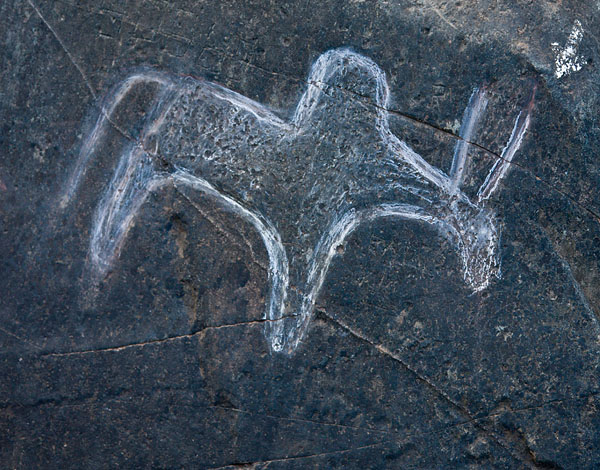Context:
The Archaeological Survey of India (ASI) confirmed that Mauxi village, Goa’s rock carvings date back to the Neolithic age.
Rock art depicting a humped-back bull in Mauxi village:

More on the news
- The carvings were initially discovered by residents some 20 years ago and these carvings tell a lot about the early inhabitants of the region.
- Ancient rock carvings that were found etched into the Metabasalt rock along the dry riverbed of the Zarme River some two decades ago belong to the Neolithic period.
- The carvings are of animals such as zebus, bulls, and antelopes, alongside footprints and cupules (circular cavities on a rock).
The details about this neolithic site were presented at the 11th edition of the Cultural and Heritage Walk or Parikrama.
- Parikrama is organized by environmentalists, writers, and researchers inside the Ravalnath (Lord Shiva) Temple at Mauxi (Mhaus) village in Sattari taluka.
Archaeological Survey of India
- It is the premier organization for archaeological research and protection of cultural heritage in India.
- It was founded in 1861 by Alexander Cunningham who also became its first Director-General.
- Headquarters: New Delhi.
Neolithic Period
- It refers to the last stage of the Stone Age – a term coined in the late 19th century CE by scholars that covers three different periods: Palaeolithic, Mesolithic, and Neolithic.
- The Neolithic period is significant for its megalithic architecture, the spread of agricultural practices, and the use of polished stone tools.
- The Neolithic period signifies an important period when humans started domesticating cattle.

